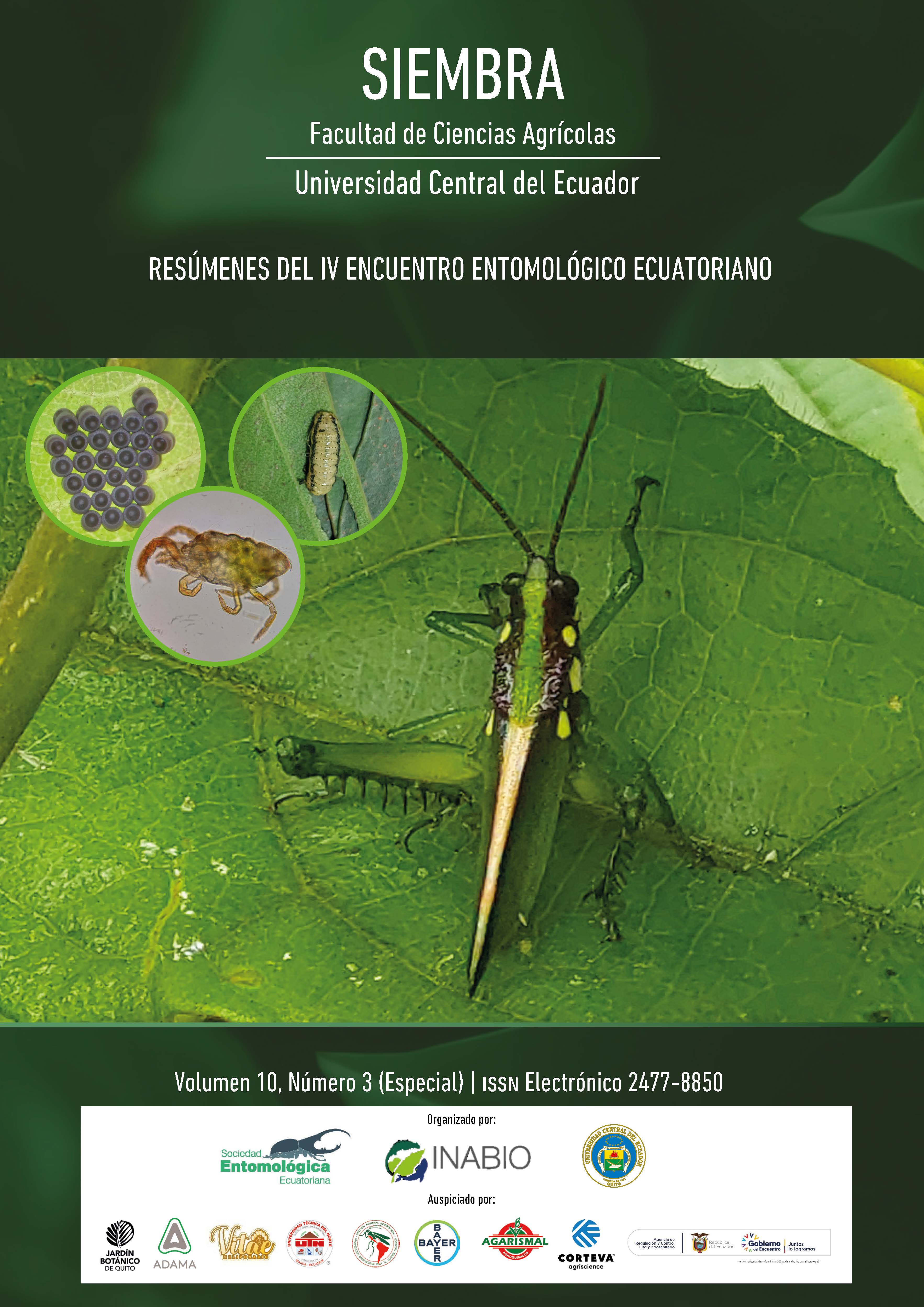ED002. Diversity and composition of Hymenoptera and its relationship with climatic factors in a peri-urban area north of the city of Cuenca - Ecuador
Main Article Content
Abstract
Urban areas experience accelerated growth, directly affecting the organisms that live there. Within these, insects are one of the most vulnerable groups. In this research, two Malaise traps were used to collect insects during the months of May 2020 to April 2021; For data collection of environmental variables, a data logger placed near the traps was used, with the aim of analyzing whether there is a correlation between the composition and diversity of insects with respect to environmental factors characterized by seasonality over time. 32 families of Hymenoptera were identified, the most abundant being Mymaridae, Pteromalidae, Formicidae, Ichneumonidae, and Figitidae. Within the study, it was determined that there is a relationship between the abundance and composition of collected insects with the temperature variables and the interaction between temperature and relative humidity, suggesting a possible seasonality. These results highlight the importance of these studies in this type of ecosystems and their potential in the future.
Downloads
Metrics
Article Details

This work is licensed under a Creative Commons Attribution-NonCommercial 4.0 International License.
The authors who publish in Siembra know and accept the following conditions:
- Authors retain the copyright and grant Siembra the right of first publication of the work, under the Creative Commons Attribution License. Third parties are allowed to use what has been published as long as they refer to the author or authors of the work and its publication in this journal.
![]() This content is licensed under a Creative Commons Attribution-Noncommercial 4.0 International (CC BY-NC 4.0).
This content is licensed under a Creative Commons Attribution-Noncommercial 4.0 International (CC BY-NC 4.0).
- Authors maintain the copyright and guarantee Siembra the right to publish the manuscript through the channels it considers appropriate.
- Authors may establish on their own additional agreements for the non-exclusive distribution of the version of the work published in Siembra, acknowledging their initial publication in the same, such as in institutional repositories.
- Authors are authorized to disseminate their work electronically once the manuscript is accepted for publication.

